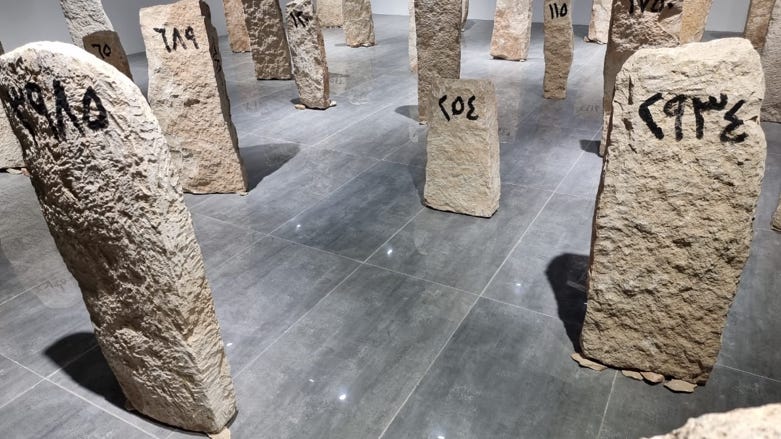‘Untitled’ exhibition focuses on female victims of honor killings
“This artwork is my reaction to the phenomenon of killing women in the name of honor.”

ERBIL (Kurdistan 24) – Artist Ahmad Nabaz, 35, held an art exhibition in the Cihan art gallery at Cihan University in Erbil from Nov. 11 to Nov. 26 that focused on the unnamed or “untitled” women who are buried in graves in the Kurdistan Region.
View this post on Instagram
The exhibition has been extended by a few more days to raise more awareness about violence against women.
Nabaz’s art exhibition is based on a graveyard for women murdered in honor killings.
“It’s a cemetery full of tragic stories and the bodies of female victims, their graves are disorganized and covered with dust, two indistinct stones from the top and bottom of each grave,” reads the exhibition’s description.
“With unidentified names or dates, only numbers are written with black and red, most of the victims of this cemetery are women. The victims of the culture and traditions of the community were killed under the name of honor by their families, tribes, and unknown people.”
These cemeteries are located in the cities of Erbil and Sulaimani.

“This artwork is my reaction to the phenomenon of killing women in the name of honor,” Ahmad Nabaz said. “When I first heard the story of the cemeteries, this idea came into my mind.”
“In these graveyards you can find women who were killed in honor killings, but the topic is really hidden because of the social stigma attached to this subject.”
“When I entered the graveyard it was like a genocide,” he added. “In the graveyard you can find more than 3,000 to 4,000 women who were murdered. Despite it being murder, they even took the women’s identity.”
The graves do not contain the names of the victims because their parents would not allow it.
“This is something which I have only seen in the massacres carried out by the Nazis,” Nabaz said.

He pointed out that the exhibition is not related to the ongoing 16 Days of Activism against Gender-Based Violence.
“In my opinion it shouldn't be one day or two day,” Nabas said. “Every time when there is violence against women, it should get attention.”

There was also a short film to commemorate the many victims of honor killings, including Dua, a Yezidi girl stoned to death in 2007. Each of their names were written on pomegranates that were smashed by white rocks to symbolize their murders.
Nabaz said he was not able to do the exhibition in other cities in the Kurdistan Region for logistical reasons.
“Some of the rocks (in the exhibition) are 200 to 250 kilos. Moving such big rocks from one city to another is very difficult and costs a lot of money,” he said.
